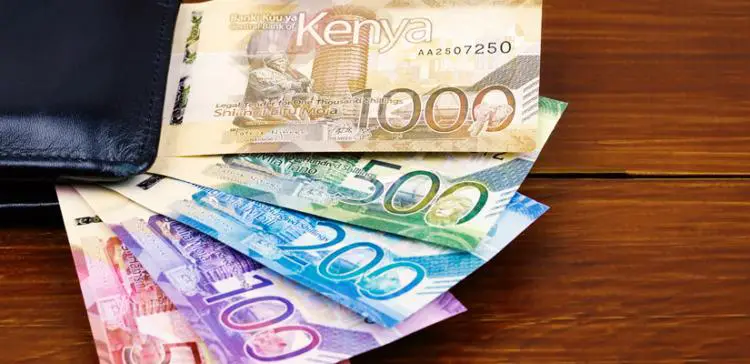- Kenyan Shilling drop to Sh100 against the dollar will mirror the pre-2020 levels
- A weak shilling means costly imports and the burden is often passed to the consumers.
- The exchange rate affects how much we earn from exports.
Kenya Shilling strengthening against the US dollar to the pre-2020 level of about 101 can only be realised sometime in September, according to market analysts.
The latest monetary update by the international research body, Economic Intelligence Unit (EIU), shows the US dollar will remain bullish against the local currencies for much longer amid the high Fed rate which will be maintained for much longer.
“The Fed cuts will come later than we previously expected,” the report reads.
“We have pushed the forecast for the date that the Fed will begin reducing its policy rate to September, from June previously, and now expect a 50-basis-point reduction before year end (from 75 basis points previously).”
Read Also: Strong shilling boosts investor confidence as Nairobi bourse picks in Q1
Kenyan Shilling Drop to Sh100 Against Dollar
The final result is a stronger exchange rate favoring the U.S. dollar, which strengthens against the local currencies. In this case, the shilling.
The Federal Reserve held its ground on interest rates in the latest review in early May, again deciding not to cut as it continues a battle with inflation that has grown more difficult lately.
The Federal funds rate has been between 5.25 – 5.50 per cent since July 2023, when the Fed last hiked and took the range to its highest level in over two decades.
The impact of the strong dollar has had the shilling shed close to 31 unit values since early 2020 when it started weakening to exchange at 132.4 yesterday. Notably, the local currency had weakened to a low of 161 as of January 2024.
A weak shilling means costly imports and the burden is often passed to the consumers.
The slight gain from January to date is on the back of the successful settlement of the inaugural $2 billion buyback plan, where the government paid back $1.5 billion in February, boosting investor confidence.
Why does the exchange rate matter?
The exchange rate matters for several reasons.
First, it may drive domestic inflation. For example, if one barrel of oil trades for US$100 and the exchange rate is KES 120/US dollar, we pay KES 12,000 per barrel. Should the shilling depreciate to KES 150/dollar, we would pay more: KES 15,000 per barrel.
Because oil is used in the manufacture of goods and provision of services (such as transport), a higher oil bill makes those goods and services more expensive.
[Photo/Business Insider Africa]
Second, the exchange rate also affects how much we earn from exports. For example, exports worth US$1,000 would fetch us more shillings (KES 150,000) at KES 150/dollar exchange rate rather than only KES 120,000 at KES 120/dollar.
However, economic sectors are not affected the same way by exchange rate changes. Sectors that do not export or import goods and those that do not compete with imported goods are hardly affected by exchange rates.
What role does Kenya’s central bank play in the foreign exchange market?
In a market-driven exchange rate system such as Kenya’s, the central bank’s responsibility is fairly straightforward. It is to ensure exchange rate stability to facilitate planning by businesses and households and to maintain confidence in the currency. It does this by intervening in the market whenever necessitated by exchange rate fluctuations.
For example, on 5 December 2023, the central bank’s monetary policy committee intervened by increasing the policy interest rate from 10.5% to 12.5% on the argument that the shilling had depreciated “more than necessary to reestablish equilibrium”. An increment in the interest rate is expected to attract foreign investors, creating a demand for the shilling and causing it to appreciate.
However, this action did not alter the market’s expectations. The shilling continued falling, and, by 25 February 2024, the shilling had depreciated to 163/US$. This is probably because there were other reasons keeping the shilling weak, such as investors’ fears about a possible default on Kenya’s maturing eurobond debt.
In mid-January 2024, Kenya sought to refinance its US$2 billion maturing eurobond obligation. On being approached, two multilateral institutions, the International Monetary Fund and Trade and Development Bank, committed close to US$ 1 billion in new loans.
This “success” induced the initial change of tide in the value of the shilling. Later, nudged by Cote d’Ivoire’s success, Kenya issued a US$1.5 billion seven-year note in the eurobond market, the success of which triggered a strong rally in the shilling’s value: by 10 April 2024, it had strengthened to about 129/US$.
Is the current shilling’s appreciation sustainable?
Like many market-driven currencies, the shilling is not floating freely. As explained, the central bank often intervenes in the currency market to achieve objectives such as, to smooth fluctuations (reduce the speed of transition from one rate to another), or to stem further fluctuations.
However, currency value changes induced by sentiment or intervention are not sustainable. If Kenya wants to keep the shilling’s value artificially high, for example, it will soon realise that foreign currency reserves, used for intervention, are not limitless.
An appreciable depletion in reserves causes expectations of a shilling decline, which induces capital flight. Capital flight then increases the shilling’s supply causing it to depreciate. Thus, to keep the strong shilling sustainable requires strong economic fundamentals.
